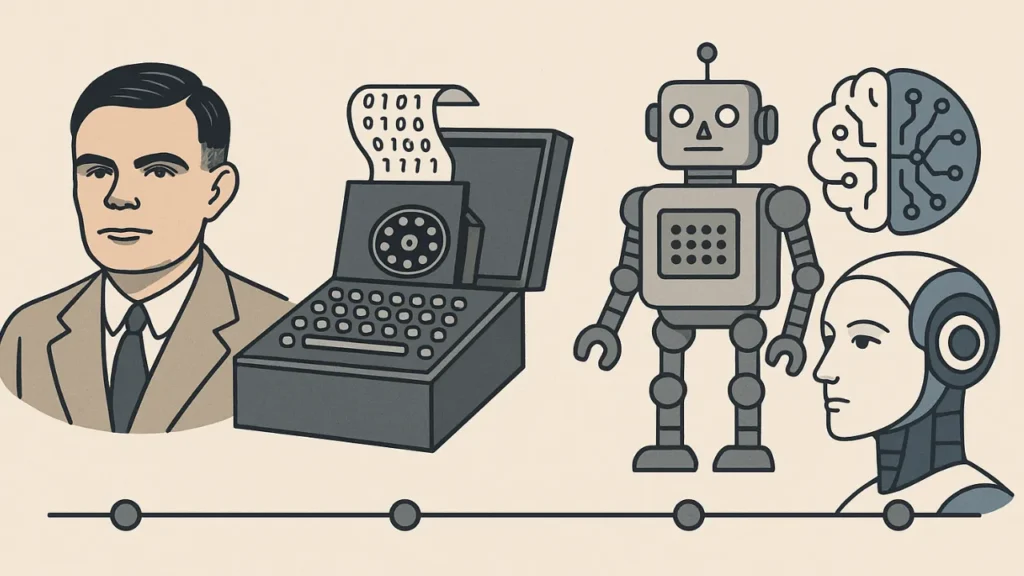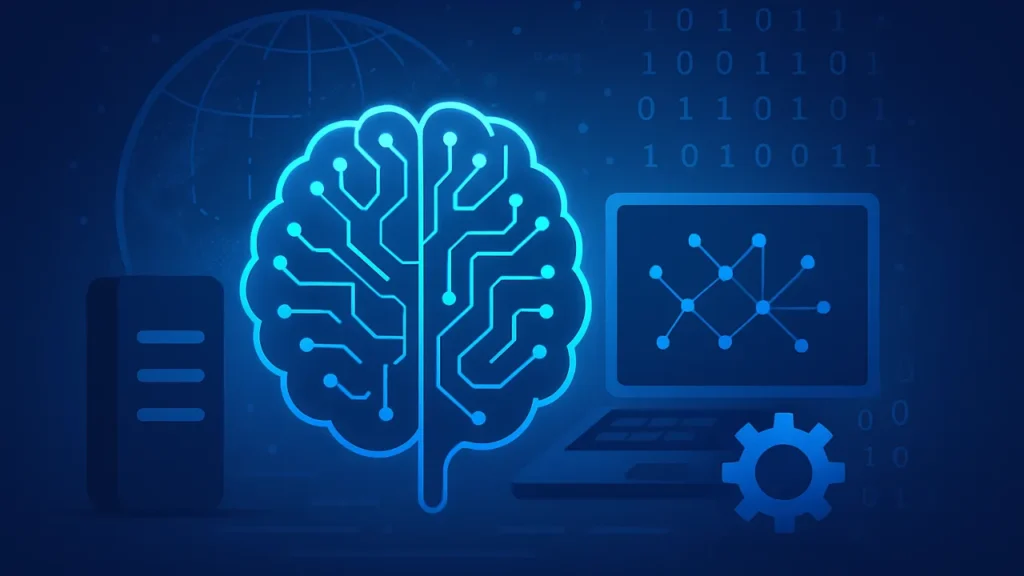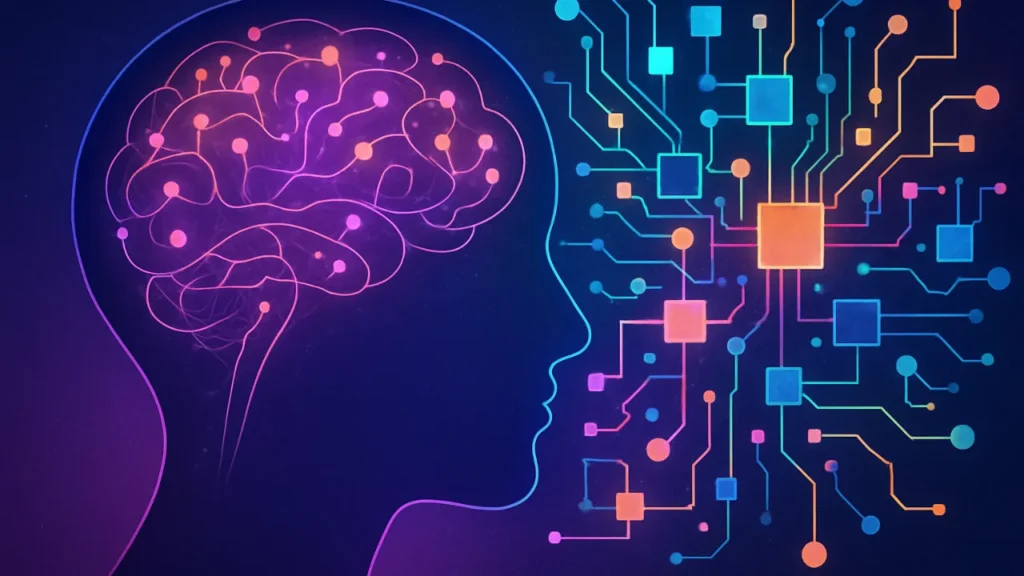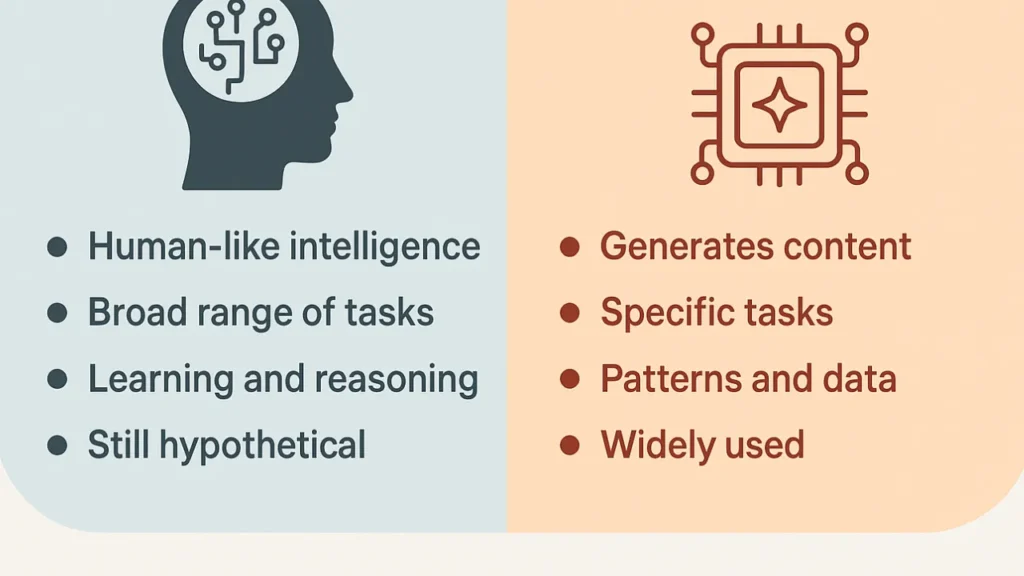Learn about the ways that General AI and Generative AI are transforming technology. Find out General AI Vs Generative AI and what that means for the future.
Currently a basic aspect of contemporary life, artificial intelligence has completely transformed our society, from how we use technology to how new ideas are created. Like all technologies, artificial intelligence is developing and heading toward new types, like machine learning and deep learning.
Currently, the protagonist of the AI movie is unquestionably Generative AI (GenAI). However, many people are still unaware of generative AI, which is sometimes mistaken for general AI.
The way we use contemporary technology has changed as a result of generative artificial intelligence, which makes it possible to produce original and meaningful text, music, video, and image content.
To guarantee the technology’s moral and responsible use in the future, it is imperative to carefully address ethical issues and concerns surrounding GenAI, such as authenticity, algorithmic bias, and accountability in its use.
To avoid AI detection, use Undetectable AI. It can do it in a single click.
Table of Contents
History of AI

The Background of Artificial Intelligence and Its Historical Development
Our contemporary technological world has been shaped by the inventiveness, difficulties, and noteworthy breakthroughs of artificial intelligence (AI) history. It began in the 1950s, when pioneers like John McCarthy and Alan Turing established the groundwork for what would grow to be a ground-breaking field.
With significant turning points like IBM’s chess program in the 1960s, artificial intelligence initially concentrated on solving games and logic problems. AI reached new heights in the 1980s as a result of the emergence of new methods and strategies over time, including machine learning and neural networks.
Increased processing power, massive data sets, and increasingly complex algorithms have all contributed to the resurgence of artificial intelligence in the twenty-first century. All of this has brought us to the point where we now have GenAI, an artificial intelligence that can interact and create content almost exactly like a human.
The Advent of Deep Learning and Machine Learning
An important turning point in the history of artificial intelligence was the introduction of machine learning in the 1980s and 1990s. By using this method, machines were able to learn from data and get better as they encountered more information.
Artificial intelligence (AI) reached new heights due to algorithms like decision trees and artificial neural networks, which made it possible to automate difficult tasks like pattern recognition and natural language processing. But deep learning’s introduction in the 2010s was what really took AI to the next level.
Deep learning uses deep neural networks to process vast amounts of data and extract intricate features, drawing inspiration from the composition and operation of the human brain.
This has democratized access to technologies that were previously only available to a select few, leading to notable advancements in fields like computer vision, speech recognition, and machine translation.
General AI

General AI is a theoretical advancement in AI that aims to build machines that are capable of understanding, innovating, and adapting in addition to performing tasks.
The idea behind General AI is to fully replicate human cognitive capacities, allowing machines to learn and perform a wide range of tasks, from diagnosing illnesses to operating automobiles. General AI would understand the nuances and contexts of human actions in addition to replicating them, unlike anything else in current technology.
It’s important to realize, though, that General AI is still a topic of much discussion and conjecture in the scientific community and does not yet exist.
Rapid technological advancements have led some experts to believe that General AI may soon be developed, while others contend that unsolvable ethical, technical, and philosophical obstacles may prevent the development of true General AI.
Generative AI

Consider generative AI to be a highly proficient parrot. It can create a variety of content, imitate intricate patterns, and occasionally surprise us with outputs that appear to be exceptionally creative.
Generative AI, like a parrot, is unable to fully “understand” the content it produces. In order to predict what will happen next—whether it’s the next word in a sentence or the next stroke in a digital painting—it must first digest large datasets.
For instance, when Generative AI composes a poem about love, it uses a large database of words and phrases that are commonly connected to love in human writing rather than any deep, emotional reservoirs.
Read Also >>> What is Visual AI in 2025?
Because it can realistically imitate human-like prose based on the data it has been trained on, it is ideal for tasks like creating marketing copy or writing articles on global economics.
It cannot, however, understand complicated human experiences or carry out operations for which it was not designed, such as tax management or economic policy planning.
Key Differences: General AI Vs Generative AI

Understanding the key differences between General AI and Generative AI is crucial to realizing the transformative potential of AI.
The main distinctions are as follows:
Capability
Replication and content creation using learned patterns and datasets are two areas in which generative AI shines. Within its limited scope, it can produce remarkable results, but it stays within its programming.
General AI, on the other hand, wants to be a creative force that can comprehend and solve problems in a variety of fields in a way that is similar to that of a human.
Understanding
Using statistical models and algorithms, generative AI predicts and produces outcomes based on historical data without actually understanding its output.
General AI, on the other hand, would have to gain a true comprehension of the environment, forming connections and possessing knowledge that no AI system can currently match.
Application
Generative AI is now widely used in many industries to boost human creativity and productivity, handling everything from basic data processing to intricate content creation.
However, General AI is still only a theoretical objective. If it becomes a reality, it has the potential to completely change society by carrying out any intellectual task that a human can, possibly redefining roles in every industry.
Conclusion: General AI Vs Generative AI
In conclusion, the development of artificial intelligence from its beginnings to the creation of Generative AI (GenAI) and General AI demonstrates an ongoing trajectory of technological innovation.
General AI seeks to attain cognitive abilities on par with humans in a variety of domains, whereas GenAI concentrates on creativity and the creation of new content.
To guarantee that these new AI technologies are used responsibly and for the good of society, it is imperative that the ethical issues and concerns surrounding them be addressed.
It is exciting to think about the opportunities that will result from the developments in GenAI and General AI, as the field of artificial intelligence has exciting and revolutionary possibilities for the future.


